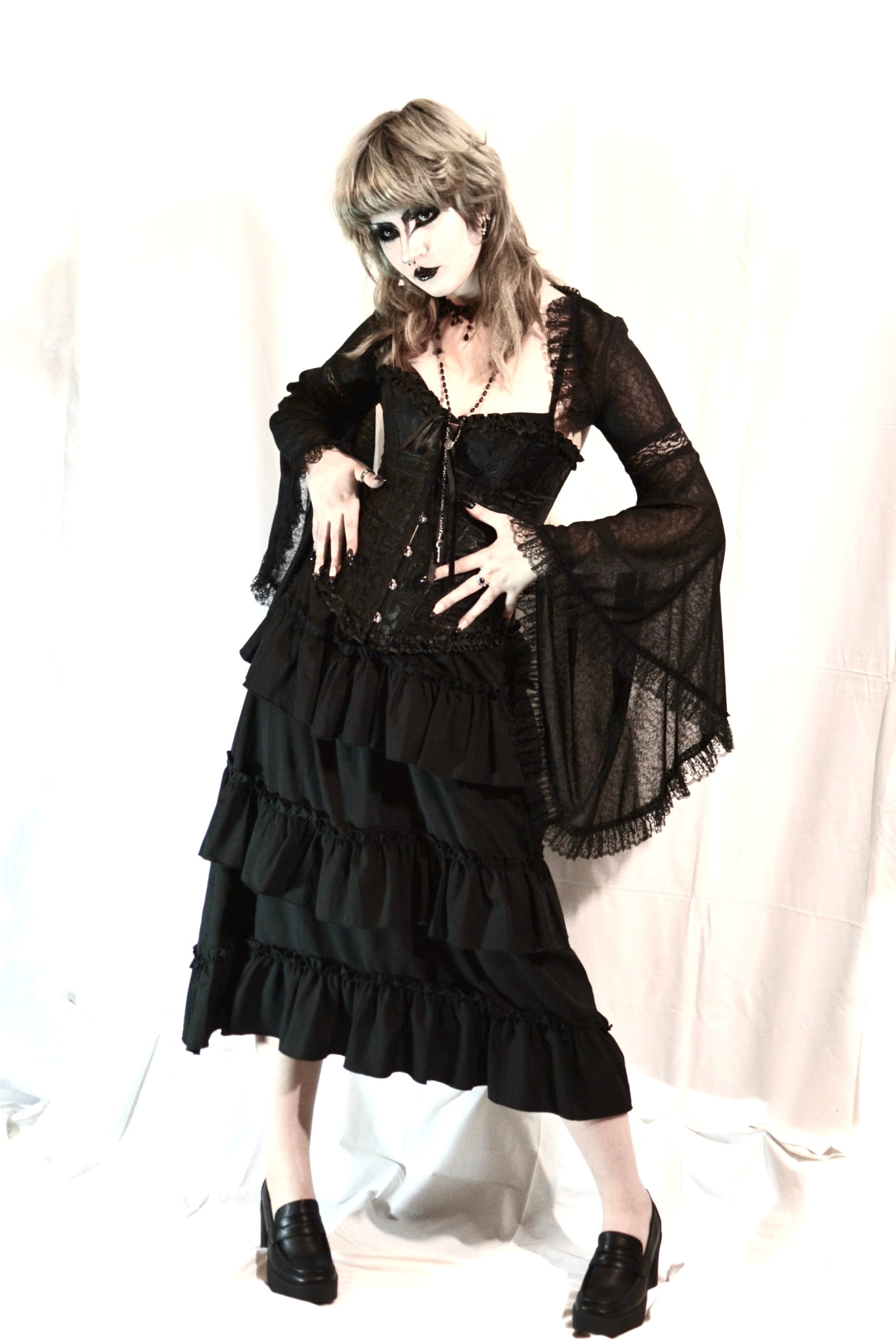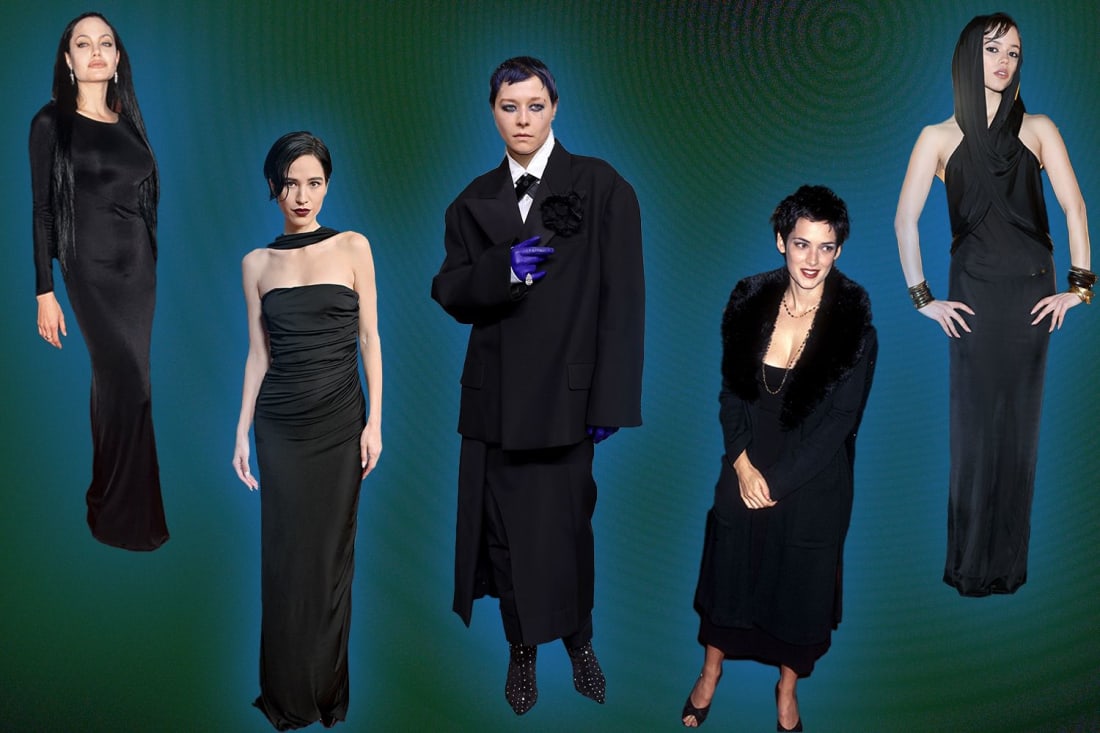What IRL goths really think about the goth trend
As designers continue to mine this OG subculture for inspiration, we speak to goths about what they really think about the dark trend taking over the runway
As designers continue to mine this OG subculture for inspiration, we speak to goths about what they really think about the dark trend taking over the runway
There’s a pervasive cliché that anyone who’s into fashion wears all black. But recently designers have been going one step further, embracing sweeping velvet gowns, dramatic makeup and romantic black lace. In short, goth fashion is everywhere. Whether it’s floor-sweeping black dresses at Rodarte, Erdem and Chet Lo or dark and moody streetwear at Etudes, R13 and Charles Jeffrey Loverboy, it’s as if designers have been blasting Joy Division while dying their hair jet black all to the dismay of their parents. You can blame it on the Wednesday Addams revival or see it as a fittingly dark response to dark times. Either way, the goth has become one of 2023’s biggest fashion muses.
Of course, runway interpretations of this aesthetic are hardly new. Designers have been mining goth subcultures for inspiration for decades. Alexander McQueen’s haunting designs often delved deep into the romanticism living at the heart of darkness using black feathers, rich lace and Victoriana silhouettes to tell a gothic fairytale. Then there’s the Lord of Darkness himself, Rick Owens, who is perhaps as famous for his own goth look as he is for the collections that reflect it. Most recently, his AW23 show featured darkly clad models with unsettling black contact lenses. And let’s not forget Versace’s goth brides from last season whose lace trimmed silk slips and dramatic veils provided the perfect outfit inspiration for rocking up to your ex’s wedding.
It’s no surprise that designers return to gothic fashion time and time again. After all, it’s one of the most widespread and enduring youth subcultures of all time. Even the smallest, most remote towns tend to have at least one or two goth kids hiding in them somewhere. Evolving in Britain in the early 1980s, the goth movement has only become more diverse and expansive as time goes on, but even today, teenage goths are often misunderstood. Stereotypes abound and some people assume they dress that way for attention or that they must be depressed, but goth culture is actually rooted in music, particularly an appreciation of 1980s bands like The Cure, Bauhaus and Siouxsie and the Banshees.
So, does fashion’s interpretation of gothic style encourage greater understanding or create a wider gulf between how people perceive goths and what being part of the subculture really means? We spoke to some young goths to hear their thoughts.

Quinn, 19
“The goth subculture originated from punk subcultures, and punk is rooted in DIY, therefore goth is meant to be rooted in DIY. Goth is most definitely not fast fashion. For me, it’s about self expression based on the music and the lifestyle, not just the fashion. You don't have to look a certain way to be a goth. And we also aren't mean just because we usually dress in a dark fashion. That said, it's really great to see more styles being represented on the runway. I think the AW23 gothic collections were done very well and tastefully. They all look really good so there isn't really anything I dislike about it. Fashion is for everybody and there's a distinct difference in being a part of the goth subculture and dressing in gothic fashion. Fashion is fashion and anyone can wear whatever they want. Goth people do not own gothic fashion, in my opinion.”

Deea, 19
“I think the goth trend looks quite interesting on the runway. It adds a bit of edginess and shows that ethereal beauty isn't just white silk and blonde hair. It can be heavily studded black lace or a red mohawk. What I dislike about it is that it promotes goth as an aesthetic more than a music-based subculture. At its core, that’s what goth is. You can be a goth without the heavy eyeliner and long skirts if you listen to the music and follow the principles and mindset that goths promote. I’m not gatekeeping, but I think this subculture should be respected. Most people using this trend are uninformed about what goth is and what it stands for, even though it’s a decades-old subculture. It’s only appreciating the part that still fits into society’s stereotypical view of beauty. When it crosses the border into something more unconventional, they call us freaks.”

Melisa, 20
“I'm not a big follower of trends, but I’m happy that gothic fashion is getting more recognition. Styles are meant to grow and evolve and the look being on the runway is definitely going to do that. I believe it’s an appreciation of the goth style and subculture, but being a goth isn’t all about the clothes. You can still be considered goth if you don't dress in a gothic way. Listening to the music is the key to it.”

Yasmine, 24
“Dark aesthetics will always surface in fashion. Where there are bubbly bursts of colour on the runway, there's always going to the black swan, so to speak. Goth and alternative subcultures have always made their way onto the runway. Vivenne Westwood pioneered punk fashion. McQueen's aesthetics heavily borrow from goth too. I quite enjoyed Christian Dior's 2006 Spring Couture and Comme des Garçons Fall 1997 as they both took their own notes from goth fashion. I think when it comes to high fashion, designers are paying their respects whenever they feature anything on the runway, period. Fashion designers worth their salt don't waste their time pandering to fads. They are inspired by their own deep love for fashion and aesthetics. I only see it as a positive and I'm honoured that mainstream fashion houses like the aesthetics as much as we do.”



